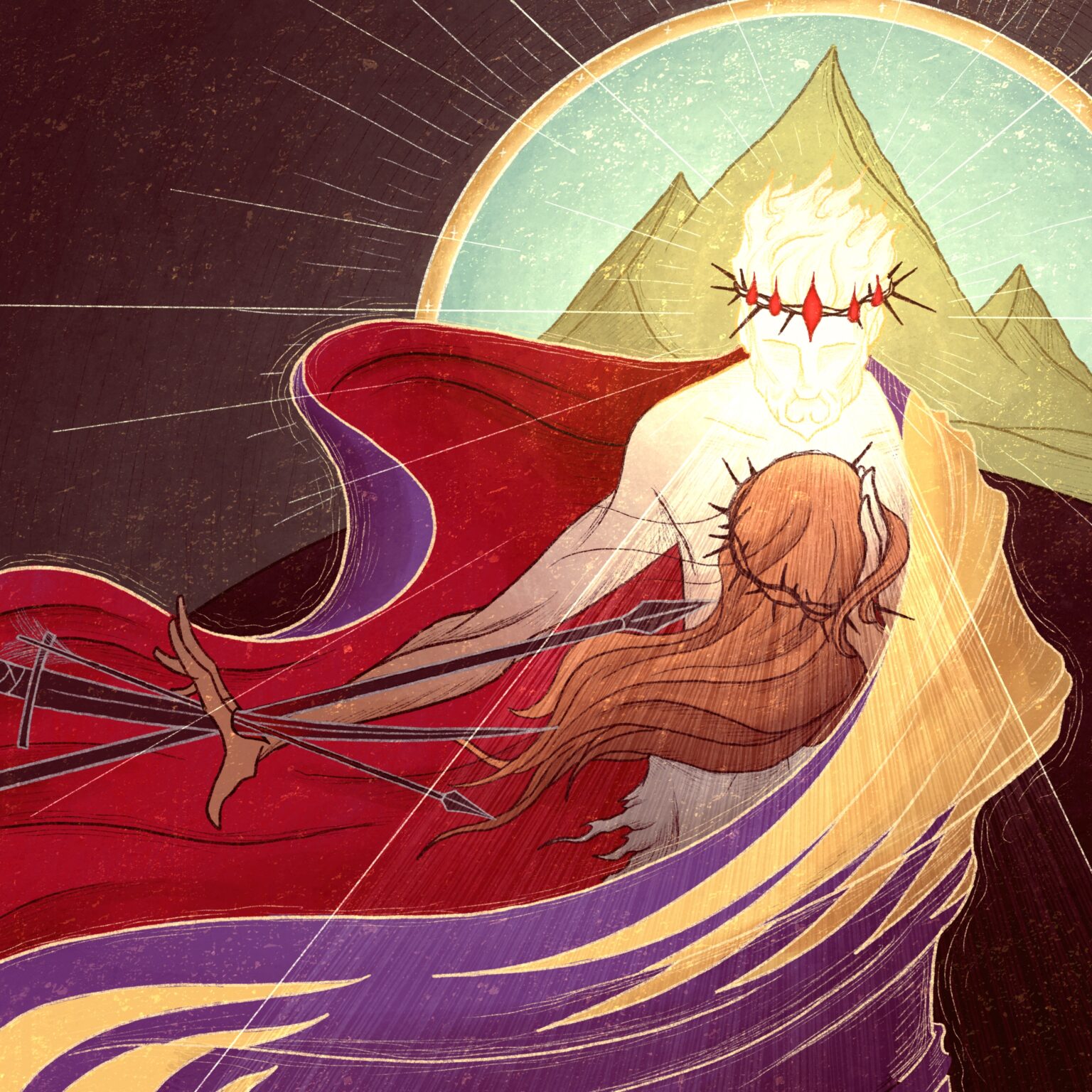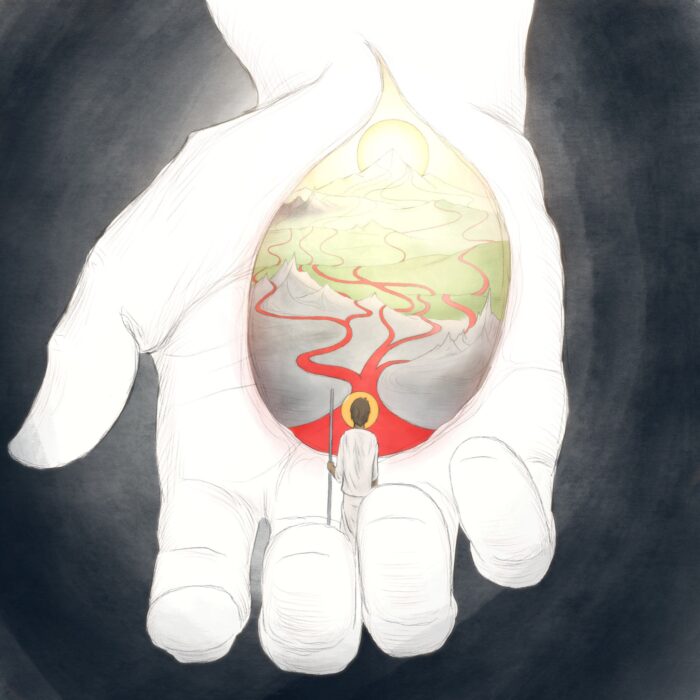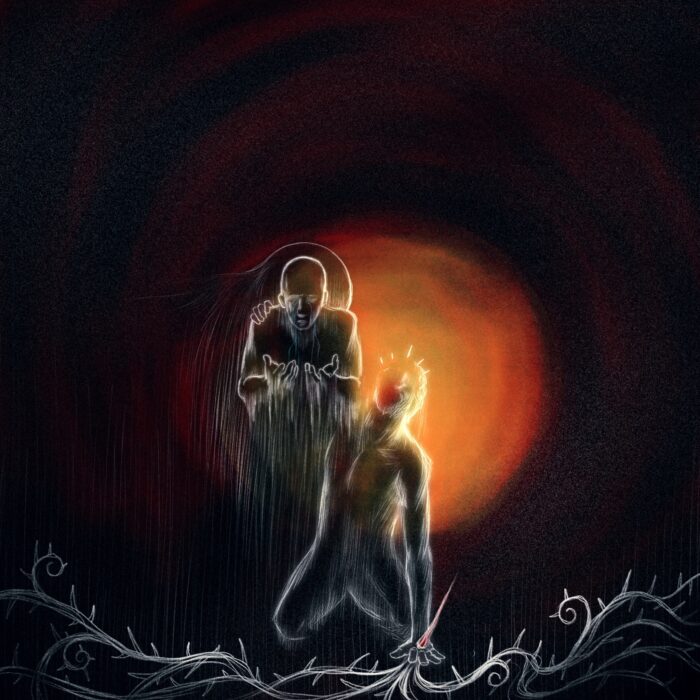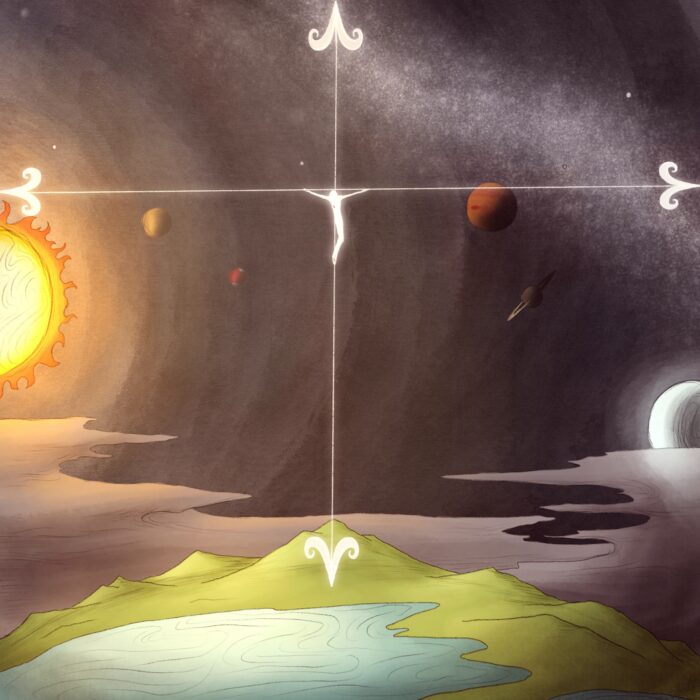Psalm 27
Rather than a specific verse, this image attempts to visually exegete some of the central movements of the 27th Psalm. So, perhaps the best way to explain it is to walk through the elements of the image in the order that they appear in the Psalm.
David begins by confessing that YHWH is his light and salvation (v.1). This is depicted in the light that shines into the face of the saint from the face of the risen Christ (whose radiance is the glory of the unseen God, 2 Cor.4:6).
The Psalmist’s confidence in YHWH is quickly followed up by the recognition that he is nevertheless surrounded by enemies and those who would harm him (v.2-3). This comes across in the image with the three weapons aimed at the saint. Like the Psalmist, she truly is in danger (it is not merely an ‘if’, but a ‘when’ and a ‘though’). However, YHWH—in Christ—is the one who first and foremost bears these assaults as her refuge—more on that later.
In the presence of his enemies, the one thing the Psalmist seeks is to be in the presence of YHWH, to dwell in His house and gaze upon His beauty; i.e., to know and enjoy God (v.4), which is eternal life (John 17:3). We see this in the image in that—despite the very real threats—the saint’s eyes are fixed on the slain and risen Jesus who is the glory of God and who is Himself the True House / Temple of YHWH. The purple cloak wrapped around the Lord and the saint reminds us of the veil that separated the Holy of Holies in the Temple…As the incarnate presence of God, Jesus IS the Holy of Holies such that the veil no longer separates but encloses those who are united to Him as His own Body and Bride, gathering them into the holy place of communion with God in Him (here too is imagery of being concealed in the true tent of meeting, who IS the riven Rock of our Refuge, v.5).
Concluding the Psalm is David’s confession of faith that he will see the goodness of YHWH in the land of the living (v.13) and that he, therefore, waits in confident hope for His God (v.14). This hope-filled waiting is depicted in the image of the New Heavens and Earth behind Christ’s head. Not only is this vision of the New Creation pictured as Christ’s halo (since the New Creation is permeated by the glory of Christ, Hab.2:14, Eph.1:10, Rev.21:23), it is also placed within the resurrection-opened mouth of the tomb. The saint waits patiently for her final salvation—resurrection—as she gazes steadily by faith on the face of the anastasiform Jesus Christ whose resurrection is the the first fruits of, the assurance of, and indeed IS her own entrance into the ‘land of the living’.
Finally, it ought to be noted that this Psalm is the song of Christ first and foremost and becomes the song of His people only as they are united to His Body by the Spirit through faith. HE is the righteous sufferer, HE is the one who descends to the depths and awaits the salvation of God, HE is the one who suffers in hope and finally breaks out into the land of the living. Only because HE passes through these things in His from-the-foundations-of-the-earth Crucifixion and Resurrection can any—David included—pray them as their own. Because of this, the attacks of the saint’s enemies pass through Christ’s hand first (every suffering that enters His people’s lives passes first through the veil of His flesh and the sanctifying sprinkling of His blood). Likewise, Christ wears the crown of His people’s thorns, albeit His crown is bejeweled with five red gems representing the five wounds of all suffering, sorrow, sin, death and damnation endured in His people’s place on the cross which have been—by the resurrection—transfigured to adornments of glory, radiant witnesses worn in splendor that declare to all the cosmos the depths and heights and breadth and width of the love of God in Christ which is the beauty of His Name, the telos of the cosmos, and the eternal joy of all those who wait for Him.




